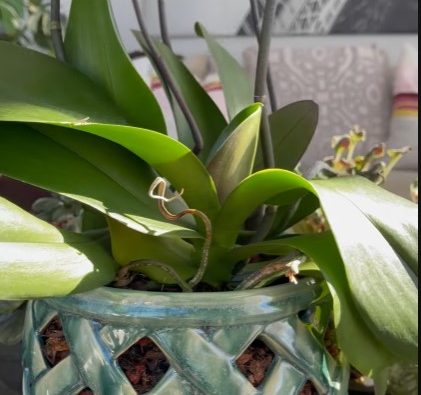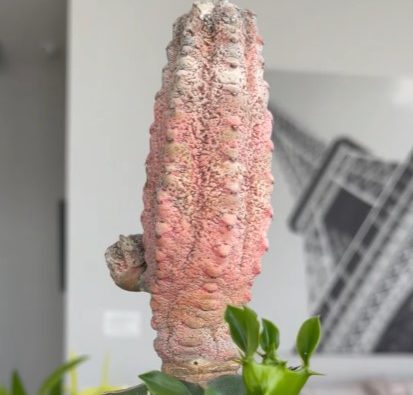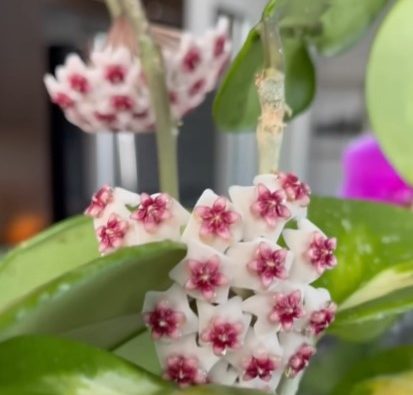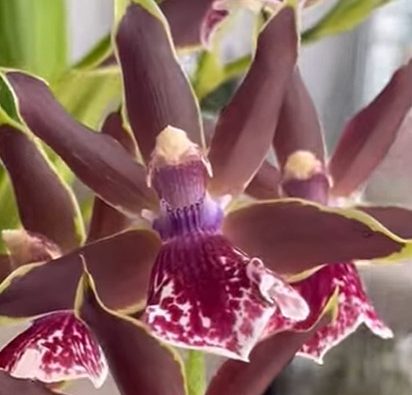The Joy of Succulent Arrangements: A Personal Story
There’s a quiet joy in collecting succulents and cacti. Something about their sculptural shapes, low maintenance habits, and sheer variety that’s both calming and addicting. While many people keep their specimens in neat rows of individual pots, I’ve developed a little trick of my own: arranging multiple plants together in one shared pot. Not only is it space-saving, it’s my clever way of “hoarding” seven plants while only technically taking up a single spot. It’s the best kind of loophole.
One of my favorite arrangements lives in an 8-inch terra cotta pot, which somehow houses a beautiful mix of plants that all get along surprisingly well. Among them: Euphorbia pseudoglobosa, Agave ‘Rum Runner’, Agave victoriae-reginae, Euphorbia obesa, a large Astrophytum, a stunning Myrtillocactus geometrizans f. cristata, and almost forgot Euphorbia horrida. They all thrive in similar conditions, which has made caring for them as a group surprisingly simple.
The aesthetic of the arrangement brings me daily joy. The blue-green tones of the foliage play beautifully off the dusty orange of the terra cotta pot. I topdressed the soil with pink stones, which add a pop of contrast and bring the whole thing together visually. The setup feels thoughtfully curated, almost like a miniature desert landscape on my windowsill.
I’ve learned over the years that success with succulents and cacti depends largely on setting up the right conditions and being observant. I use a well-draining potting mix amended with lots of perlite, which ensures that water never lingers too long. Terra cotta pots are a favorite of mine not just for their rustic look, but because they’re porous, allowing excess moisture to evaporate more quickly. This is something cactus roots truly appreciate.
Sunlight is essential. These plants love a bright, sunny spot. If you’re working with a north-facing window, I strongly recommend investing in grow lights. I’m fortunate to have a good south-facing exposure. But in winter, when light wanes, I adjust watering and hold back on feeding.
Speaking of water, my routine is flexible. During summer, I typically water once a week. If it’s unusually humid, I’ll skip a week. If it’s extremely hot and dry, I may water more frequently. It all comes down to reading the plants and adapting. That’s the heart of plant care, learning to respond rather than follow a rigid schedule.
Fertilizer is another seasonal component. During active growth in the summer, I add a small amount of diluted fertilizer to each watering. In winter, when growth slows, I stop feeding altogether. It’s important not to overdo it when the plants aren’t actively growing.
Most of these plants have been in this little arrangement for four to five years now. It’s been a genuine pleasure watching them grow, flower, and even produce little pups. Some have changed shape entirely as they matured. That slow transformation is what I find most rewarding. They’re not just plants, they’re quiet, living sculptures that shift with time.
My collection has grown over the years through visits to local plant shops and events such as the Toronto Cactus and Succulent Club Show. It’s always a thrill to stumble upon a rare variety or limited-release plant. So I keep my eyes peeled while out shopping. You never know what treasure you might find.
Succulent & Cactus Arrangement Care Summary:
Light: Bright, direct sunlight preferred. Supplement with grow lights for north-facing windows.
Soil: Well-draining cactus mix with added perlite.
Pot: Terra cotta for breathability and moisture control.
Watering: Once weekly in summer. Adjust based on heat and humidity. Reduce in winter.
Fertilizer: Diluted feed with every watering in summer. None in winter.
Seasonal Adjustments: Observe plant and environmental changes to guide care.
Bonus Tip: Topdressing with decorative stones adds visual appeal and helps keep soil in place.



